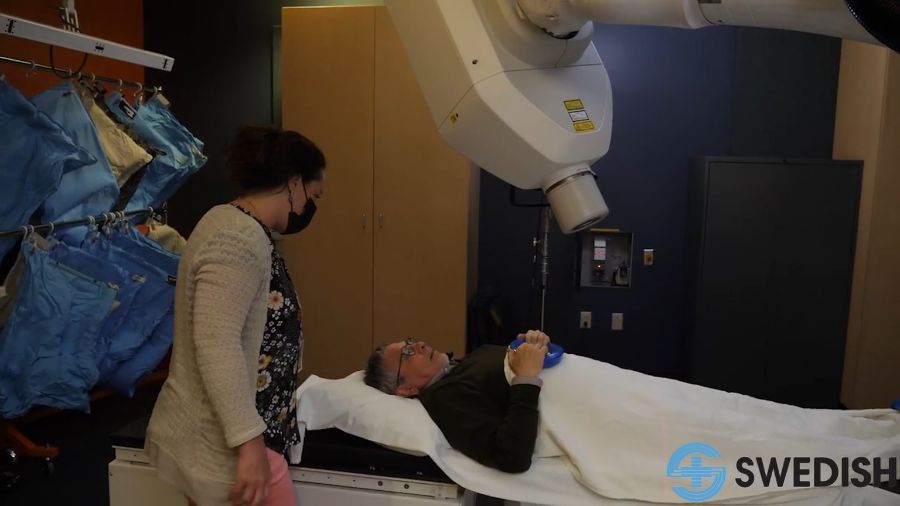Washington youth homelessness has dropped 40% but gaps remain, report says
Apr 5, 2024, 9:10 PM | Updated: 9:16 pm

In an aerial view, a homeless encampment, known informally as "Dope Slope" stands covered in garbage near downtown Seattle on March 12, 2022 in Seattle, Washington. (Photo by John Moore/Getty Images)
(Photo by John Moore/Getty Images)
Washington youth homelessness was on a downward trend from 2016 to 2022. That is according to a report from the Washington State Department of Commerce’s Office of Homeless Youth Prevention and Protection (OHY) released in February.
OHY reported a 40% decrease in youth and young adult (YYA) people experiencing unaccompanied homelessness during those years. The number of people who were homeless in 2016 was 23,961 and in 2022, that number was down to 14,410, according to the report.
However, before the number of youth experiencing homelessness went down, it almost doubled between 2015 to 2019. To combat this, OHY said it created flexible fund diversion programs in 10 counties, a statewide prevention strategy fronted by young people who had experienced homelessness and investments to keep young people in public systems of care.
Local coverage: King County wants to end youth homelessness in 2 years
More than half of the homeless youth in Washington were BIPOC
The agency’s report stated half of the people experiencing homelessness in Washington in 2022 were Black, Indigenous and People of Color (BIPOC). Also, over 1 in 10 people were part of the LGBTQ+ community. But OHY added this was probably an undercount because most sexual orientation data was unknown.
More than one-third of young homeless people were disabled and over 1 in 10 were pregnant or parenting.
One young parenting QTBIPOC (queer and/or transgender and also Black, Indigenous, and People of Color) person shared part of their story with OHY.
“I want my story out there somehow. I would like it to help someone. With every tragic thing that happened all I ever felt was that this never happened to anyone. I was abused and held captive … This should never happen to anyone else … It was quite lonely throughout everything … It was very emotionally damaging. I hope it helps anyone who ever feels that way to know they aren’t crazy and doing it alone,” the person said, according to the report.
OHY reported the two biggest systematic barriers for young people experiencing homelessness were a lack of affordable housing and the mental health crisis. OHY also said there are limited services for minors who are pregnant or parenting.
Another notable fact: Native Hawaiian and Pacific Islander young people were nine times more likely to experience homelessness than white young people. Black and African American youth were seven times more likely.
One report that illustrates the violence Native American women face is Our Bodies, Our Stories by the Urban Indian Health Institute in 2018. It stated over half of the women they interviewed lacked permanent housing and 94% had been raped or coerced in their lifetime.
OHY urged a plan to combat discrimination.
“There is need for a coherent and measurable statewide equity strategy that adopts a targeted universalism approach,” stated the report.
Young homeless person tells OHY youth want to be heard
One person told OHY young adults need to be listened to.
“Youth and young adults appreciate hearing that our voices, stories, testimonies are not going unheard. Those that lose hope and don’t believe a change is coming often end up giving up on life. Death rates of youth and young adults that are pleading for help and a miracle or even a voice that say we hear or see you are rising quickly,” a QTBIPOC, parenting, young person said.
OHY added several recommendations, in the report, to combat the youth homelessness crisis. Some of them include investing in youth programs, more mental health resources, creating meaningful careers for young people and improving relationships with schools and colleges.
From Ursula Reutin: The Burien homeless crisis highlights an even bigger problem
“Resources, execution, and community are all steps that should be taken towards ending homelessness. The smaller we break things into groups and take action towards helps the big picture as a whole,” another BIPOC young person told OHY.
A line graph in OHY’s report depicted a line staggering down as time went on, however, at the end of the chart, July 2022, the line goes back up. It appears more data will need to be collected to see if the rate of homeless youth in Washington continued to go down, or if the issue is getting worse.
Julia Dallas is a content editor at MyNorthwest. You can read her stories here. Follow Julia on X, formerly known as Twitter, here and email her here.













